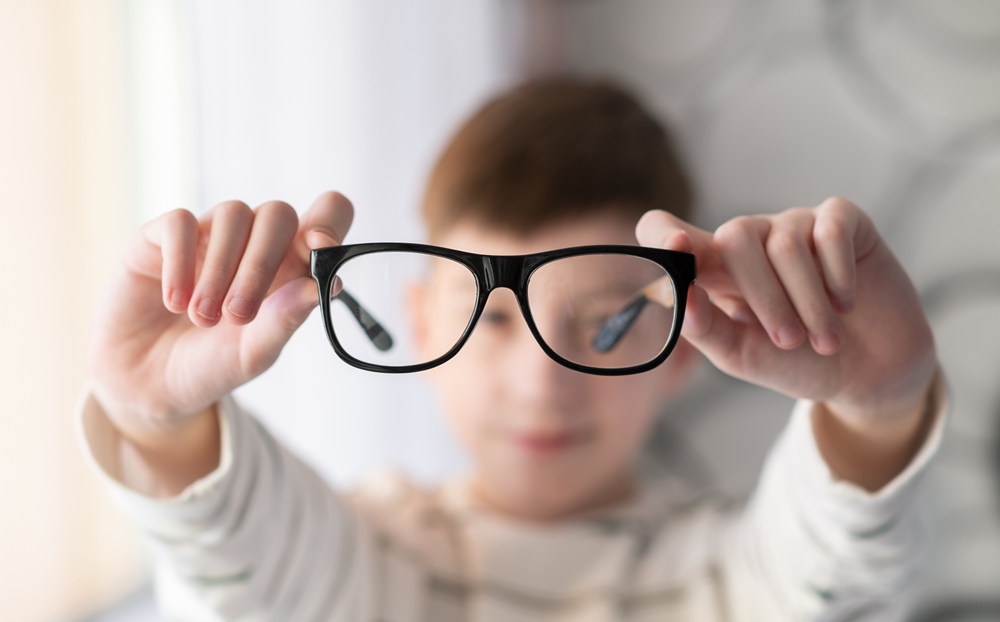
Myopia, commonly known as nearsightedness, is a refractive error that affects a significant number of children worldwide. In this condition, the eye's focusing power is too strong, causing light rays to converge in front of the retina instead of directly on it. As a result, distant objects appear blurred, while near objects remain clear. Myopia in children is a growing concern, and understanding its causes and treatment options is crucial for their overall visual health and development.
What is Myopia?
Myopia typically develops during childhood and can worsen as the child grows older. The exact cause of myopia is not fully understood, but it is believed to be a combination of genetic and environmental factors. Children who spend excessive time engaged in near work activities, such as reading, using digital devices, or studying, are at a higher risk of developing myopia. Additionally, a family history of myopia increases the likelihood of a child developing the condition.
Myopia in children often presents with symptoms such as difficulty seeing distant objects clearly, squinting, frequent eye rubbing, and sitting too close to screens or holding books close to their face. Children with myopia may also complain of headaches or eye strain, particularly after trying to focus on distant objects.
The Importance of Regular Pediatric Eye Exams for Early Detection
Regular pediatric eye exams play a vital role in detecting myopia and other vision problems in children at an early stage. Early detection is crucial because myopia can progress rapidly during childhood and adolescence, potentially leading to more severe complications if left untreated.
The American Optometric Association (AOA) recommends that children have their first comprehensive eye exam at 6 months of age, another exam at age 3, and then annually thereafter. During these exams, an optometrist will perform various tests to assess your child's visual acuity, eye alignment, and overall eye health.
By detecting myopia early, your optometrist can recommend appropriate treatment options and monitor the condition's progression. This proactive approach can help slow down the progression of myopia and prevent potential complications, such as an increased risk of retinal detachment, glaucoma, and other eye diseases.
Risks of Untreated Myopia in Children
If left untreated, myopia in children can lead to several potential risks and complications. As the condition progresses, the eye may continue to elongate, increasing the risk of developing more severe refractive errors and other eye problems.
• Increased Risk of Retinal Detachment: Myopia is a significant risk factor for retinal detachment, a serious condition where the retina separates from the underlying tissue, potentially leading to vision loss if not treated promptly.
• Glaucoma: Children with high myopia (severe nearsightedness) are at a higher risk of developing glaucoma, a group of eye diseases that can damage the optic nerve and lead to vision loss or blindness.
• Cataracts: Myopic individuals are more prone to developing cataracts, a clouding of the eye's natural lens, at an earlier age compared to those without myopia.
• Myopic Maculopathy: This condition involves degenerative changes in the macula, the central part of the retina responsible for sharp, central vision, and can lead to vision impairment or blindness in severe cases.
• Impaired Visual Development: Untreated myopia can negatively impact a child's visual development, potentially leading to difficulties in learning, reading, and other activities that require clear vision.
Early treatment and management of myopia in children can help mitigate these risks and ensure proper visual development.
Effective Treatment Options for Myopia in Children
There are several effective treatment options available for managing myopia in children. The choice of treatment depends on various factors, including the child's age, degree of myopia, and individual preferences. Your optometrist will work closely with you to determine the most appropriate treatment plan for your child.
Atropine drops work by temporarily relaxing the eye's focusing muscles, which reduces the eye's tendency to elongate—a key factor in the progression of myopia. By slowing this elongation, Atropine helps to control the worsening of myopia in children and young adults, making it an effective tool in managing this condition. One of the significant benefits of atropine eye drops is their ability to slow the progression of myopia in children. Several studies have shown that low-dose atropine eye drops can effectively reduce the rate of myopia progression by up to 50% or more, depending on the concentration used.
Additionally, MiSight soft contact lenses are a groundbreaking treatment option for myopia in children. These specialized contact lenses are designed to provide clear vision while simultaneously slowing the progression of myopia. The unique design of MiSight lenses incorporates a dual-focus optical technology that creates a myopic defocus or blur on the peripheral retina. This peripheral defocus is believed to send signals to the eye to slow down its elongation, thereby reducing the progression of myopia.
Schedule Your Child’s Eye Exam with Broad View Eye Center Today
Myopia in children is a growing concern that requires early detection and appropriate treatment. Regular pediatric eye exams are crucial for identifying myopia and initiating effective treatment options, such as atropine eye drops or MiSight soft contact lenses. These treatments, combined with lifestyle changes and good habits, can help manage myopia and potentially slow its progression.
If you're concerned about your child's vision or have noticed signs of myopia, schedule a consultation with Broad View Eye Center. We will provide a comprehensive eye exam, recommend appropriate treatment options, and guide you through the process of managing myopia in your child. Visit our office in Berea, Broadview Heights, or Strongsville, Ohio. Please call (440) 526-7070 or (440) 238-7865 to prioritize your child's visual health and ensure a bright future.









